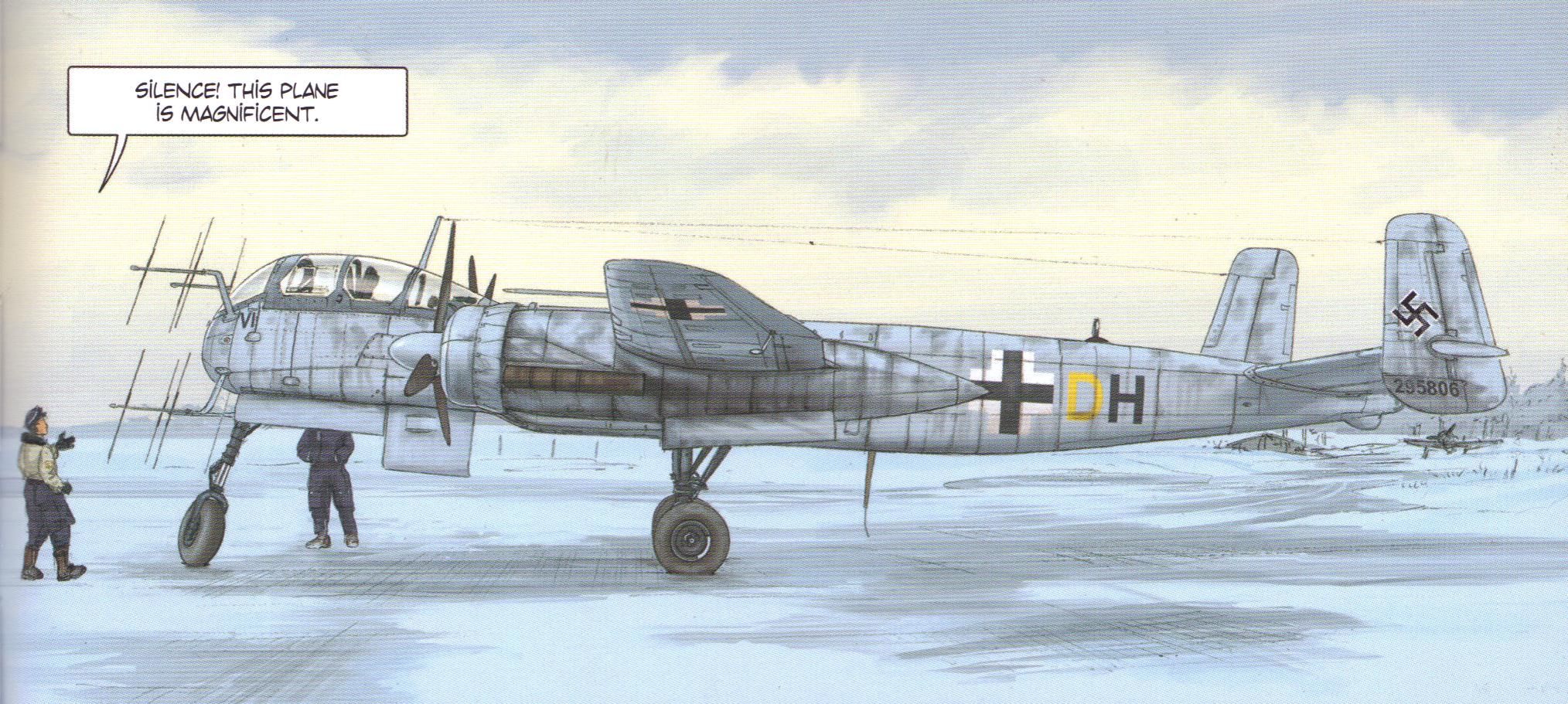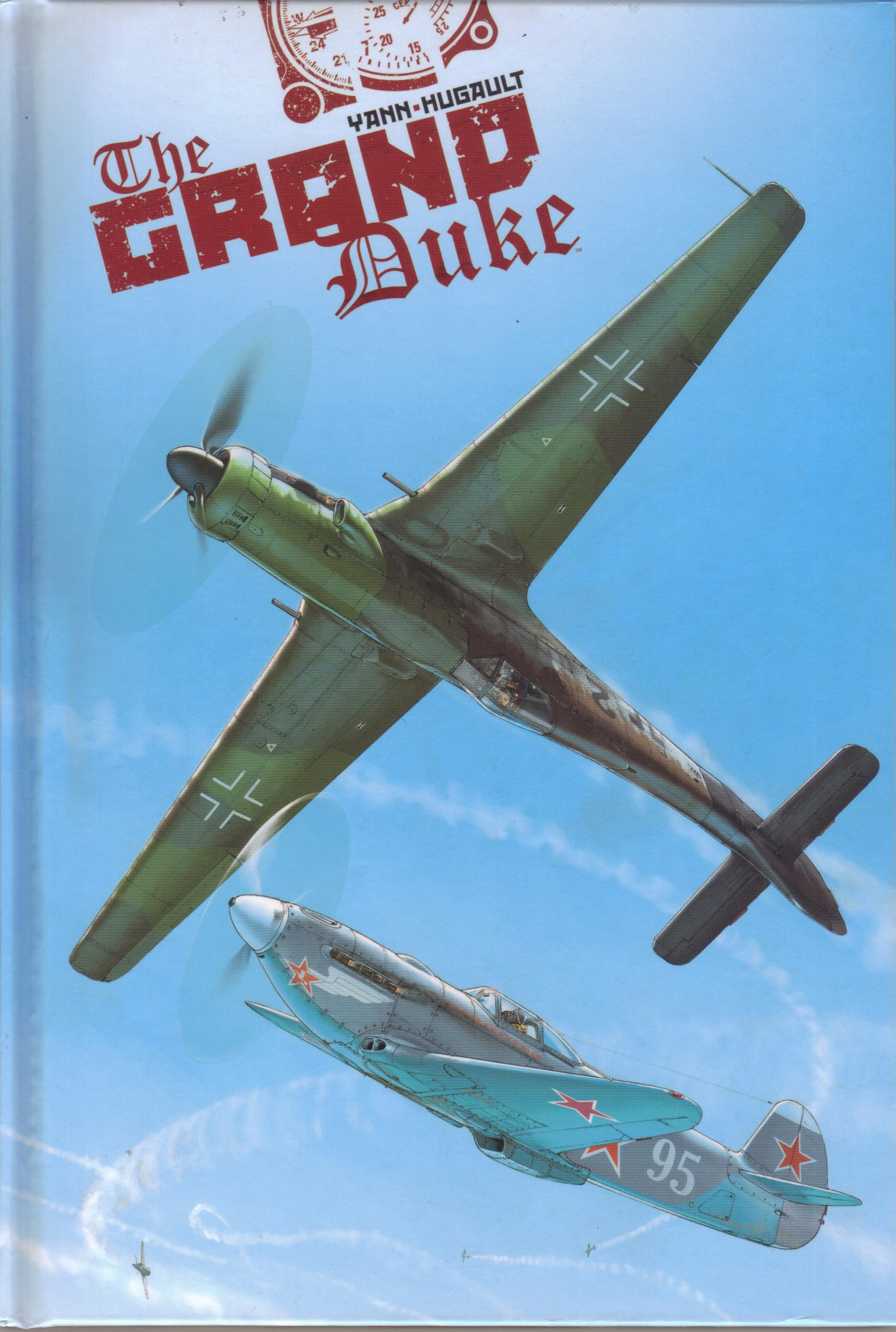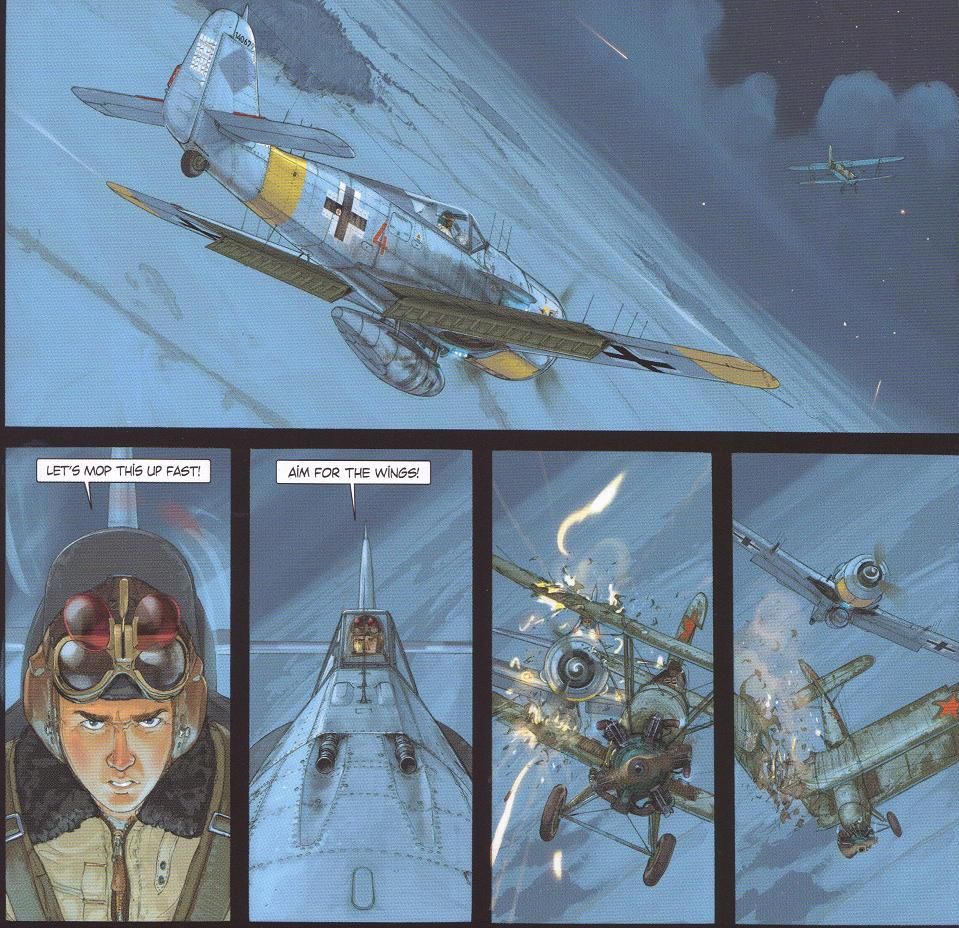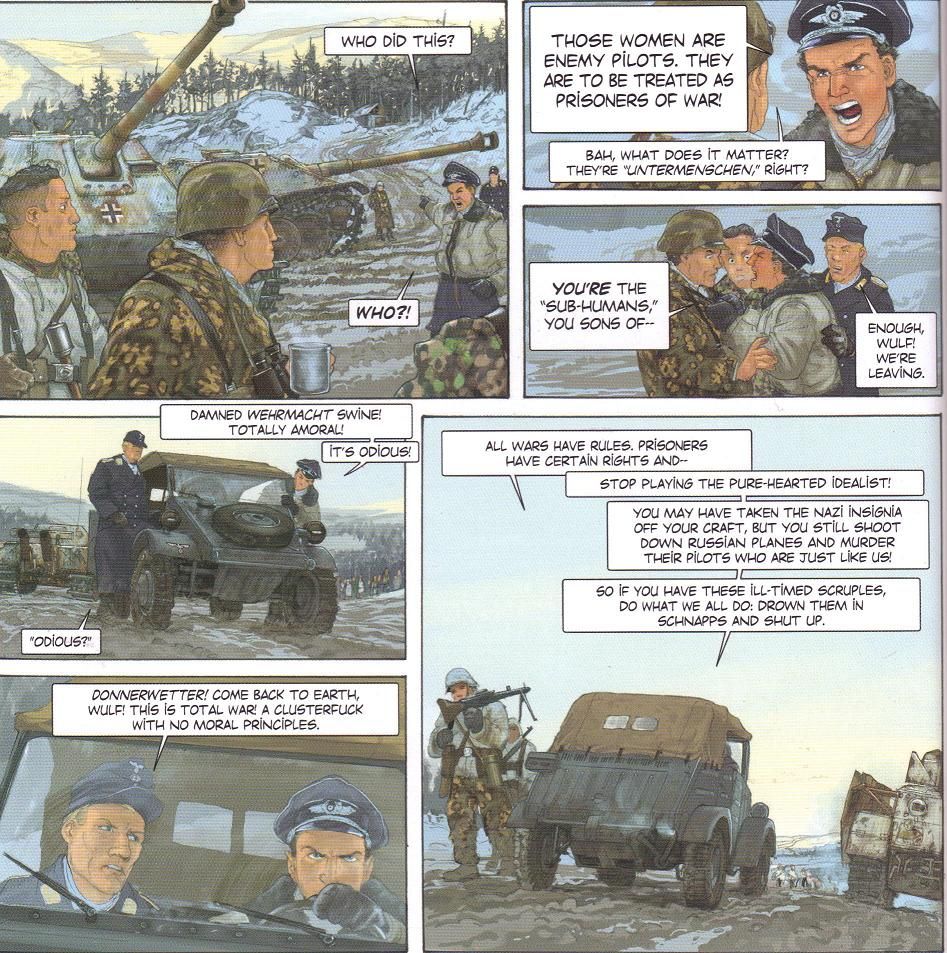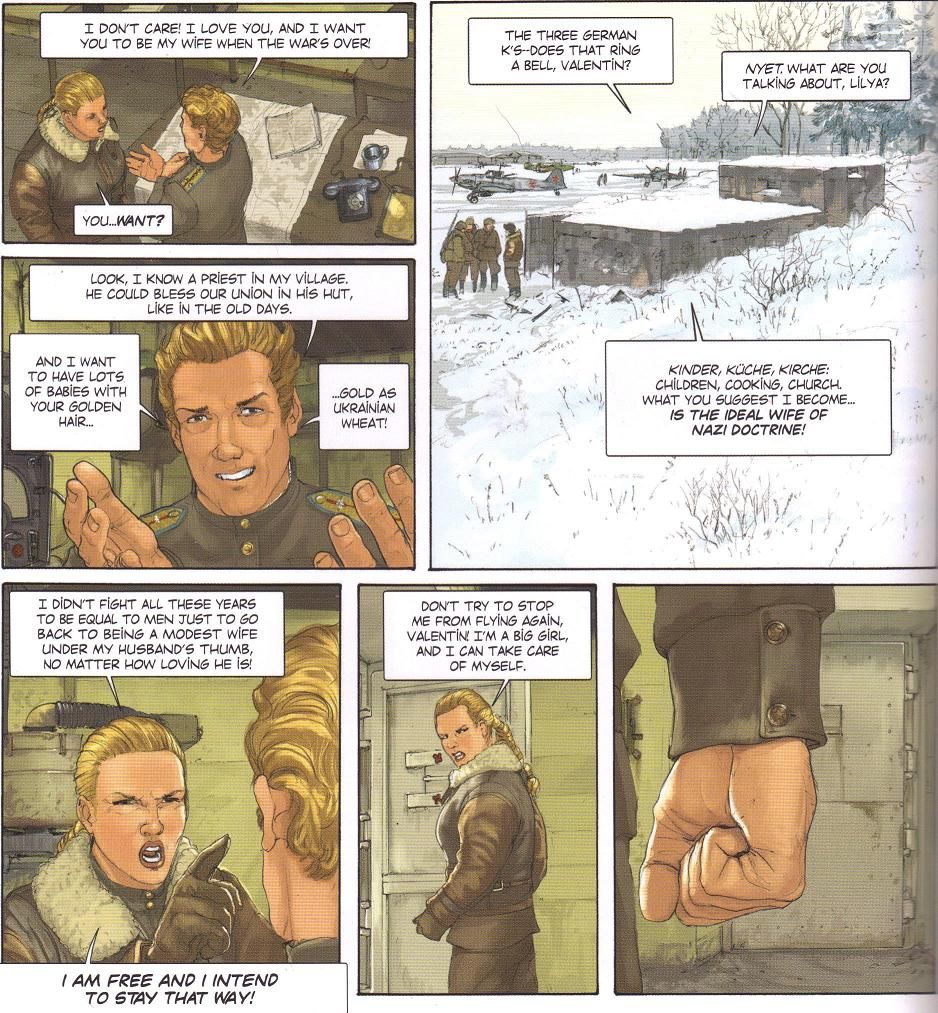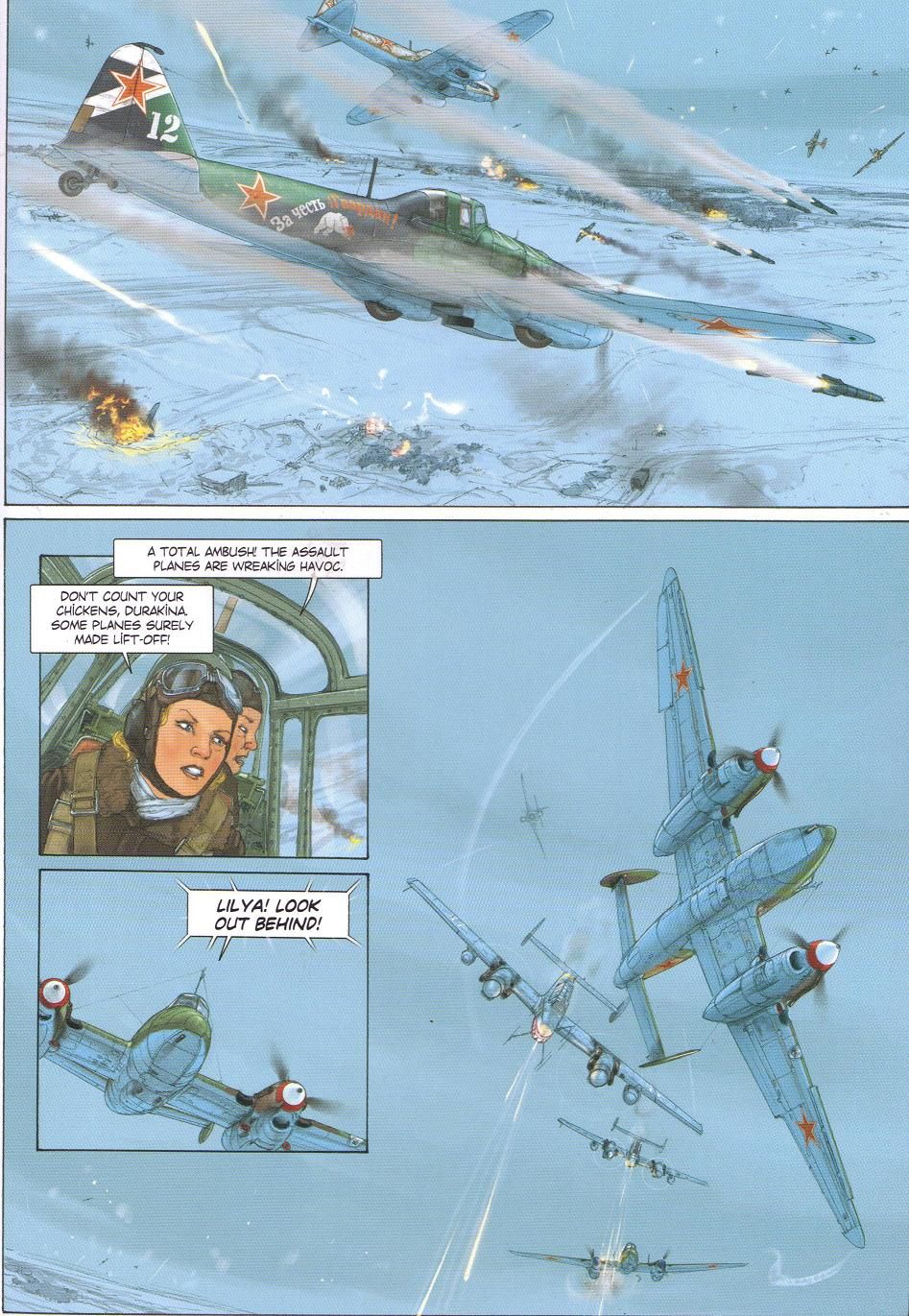It's time for another of those fancy European comics! We all love those, right?
For some reason, I missed The Grand Duke when it came out in Previews last year, and our eagle-eyed European commenter, Pedro Bouça, took me to task for it, because I'd usually be all over something like that. So I picked it up this year at Emerald City - yes, it's another comic from several months ago that I haven't gotten around to reading yet - and I thought I'd review it.
That's what I do around here, right?
The Grand Duke was published it ye olde Unyted Staytes by Archaia, which charges us $24.95 for it, but it does have the high production values we've come to expect from Archaia. It's illustrated by Romain Hugault, written by Yann (le Pennetier), translated by the inimitable Edward Gauvin, and lettered by the excellent Thomas Mauer. Let's give it a look!
Hugault is apparently the artist you want to do a story about aviation, as it's a passion of his, and the art in this book is spectacular. It's set during World War II, on the Eastern Front, as the Luftwaffe and the Soviet Air Force battled as the Nazis slowly retreated across Poland and into Germany in the later years of the war. Hugault is amazing - on the first two pages he establishes so much of the German protagonist's personality without any words, while showing that the Russians employed female pilots. We get an owl landing on a branch over a female figure on the ground. We find out on the second page that she's dead, but her eyes are open, and Hugault ties the owl's eyes to hers (which is a nice little metaphor, as we'll see). Then we see Oberleutnant Wulf, the male protagonist, as he finds the body and bends over to close her eyes. In just a few panels, Hugault establishes that Wulf is a decent man who believes in treating the enemy with honor, a concept that will be seen as increasingly outdated as the war becomes more savage and the Germans capture some of the female pilots. Hugault colors the scene in wintry blue (it's December 1943), which sets up the melancholy mood of the book - it's a realistic color, as much of the book takes place during winter and in the sky, so blue will naturally be primary, but the way Hugault deepens the blues in the twilight also implies a dreamy, dire tone of the book.
It's impressive that in a handful of wordless panels, the artist can get so much about the book across.
Hugault obviously uses photo references for all the planes in the book, but it doesn't appear he simply places photos in the book - he draws them into the narrative, just using the pictures to guide him. It allows the book a strong sense of verisimilitude without turning into a computer-generated nightmare. Hugault's fine line style gives the book a elegaic elegance (yeah, I wrote that) that haunts the characters and the reader as you move through the book. The corpse on the first page gives us a hint of that - the young lady is seemingly uninjured, just resting, with her red hair flowing from her head acting as a substitute for blood, and she's painfully beautiful, something Wulf seems to acknowledge on the second page. There's some blood in the book, but Hugault doesn't indulge too much in gore, and it seems as if Hugault buys into the idea of the nobility of the air, not only because of the way Wulf acts but because the fighting seems more sterile and balletic. This isn't really a criticism; Hugault and Yann are trying to show the decency of humanity in the middle of horror, so they don't want the horror to overwhelm the narrative too much, but it is interesting that Hugault's style makes fighting a war in the sky something far more highbrow than it might be otherwise. He does a decent job contrasting it with the situation on the ground, which is where all the blood is shed. Both Wulf and Lilya, the Russian "night witch," are bloodied on the ground after they fall from their lofty perches. The ground is mud, blood, rape, and death. The air is freedom. It's not true, of course, but it's the idea that we get from looking at the artwork. This is especially true in the few scenes that don't take place in the winter - the book jumps from the first winter to the late autumn of 1944 and into 1945, as the Red Army moves closer to Berlin - as Hugault colors the sky the same nostalgic blue and his planes tend to match that tone, while the ground is muddy, brown, and ugly. The scenes on the ground are deliberately muted in color to make the contrast more overt. Hugault also tries to show the toll the war takes on his characters, although he's not as successful at that. He's a precise draftsman, and it's almost as if he can't help make the people more attractive than they'd be after spending so much time in the field.
He gets to draw naked female bodies, and they look impossibly healthy for their situation. The men look like actors who have tried to scuff themselves up for the role of "soldier." This doesn't bother me too much, because it seems like most artists have problems with it, but it's still something I noticed. From what I know about the last months of the war in Eastern Europe, both sides got pretty desperate, and perhaps it's just Hugault implying that the air forces of both sides remained soldiers while the rest of the army devolved into savagery. Maybe.
The story is solid, although whenever I get a book that's not originally in English, I wonder how much is lost in translation. That's not, I hope, a knock against Gauvin, because I've read a lot of his translations and he seems to be very good at it, but it's just a general observation about reading anything not in the original language. It's difficult to transfer everything over, from the words to the tone to the cultural context, and I always wonder about that. With The Grand Duke, it feels like it could be longer, because Yann takes too long to get to the meat of the story. Wulf, a German pilot who hates Hitler and only counts actual fighter planes toward his total of kills (in contrast to the brash young pilot who shows up and begins counting troop transports and other unarmed targets), is becoming more and more disillusioned with the war and with Nazism, but he's such a good pilot that no one dares bring him up on charges for treason (because he insults Hitler). His wife is dead, but his daughter is back in Berlin, where he hopes she'll be safe. He is trying to remain an honorable person even as Germany slowly begins losing the war and ardent Nazis begin to question his devotion to the cause, which he doesn't deny is non-existent. One of his friends is half-Jewish, which will cause problems for him down the line, but he refuses to turn on him, because that's not who he is. Meanwhile, Lilya is a Russian pilot, and Yann does a pretty good job showing both how respected the female pilots were in the Red Army and how easily it was for men to take advantage of them. She's blamed equally when a man makes a pass at her, and she's still not completely accepted by those who don't know about her skills.
Both characters are interesting, and Yann does a good job contrasting the way both their armies operate.
The back of the book calls this a "Romeo-and-Juliet story," and to a degree, it is, but the love story is where the book doesn't deliver quite as well. Yann spends a lot of time building up the two characters, so when they finally get together, we're supposed to think it's a great emotional moment, but it's not. It's not the first time they meet; Lilya gets captured in the book, and Wulf allows her to escape after catching some soldiers about to rape her. Later, she gets captured again (yeah, Lilya has some bad luck) and ends up on the same plane flying to Berlin as Wulf, who's going there for a commendation. The plane gets shot down, but both of them survive and they end up having sex. On the one hand, fine. It's a war, and Wulf actually showed some kindness to her, and she thought she was going to die, and they both know they could die at any moment. But sex does not a great love story make, and the sex comes so closely to the end that the way the book ends doesn't feel earned. I'm not going to go too much into the actual ending, but while the circumstances surrounding where they both end up work pretty well, I don't get the feeling the "love" they feel for each other is real. This was apparently a three-volume comic in 2008-10, but it feels like it could have been one more to allow the relationship between Wulf and Lilya to be as deep as the rest of the comic. It works much better as a criticism of war, totalitarianism, and the similarities between the powerful on either side and the soldiery on each side of a war. Yann is a bit heavy-handed with Wulf and his honor, but for the most part, we get a fascinating portrait of both sides of a brutal war and how difficult it is to hold onto one's basic humanity. Perhaps Yann didn't want to say anything else with the encounter Wulf and Lilya share, but it seems like he wanted to and just ran out of room.
For the most part, though, this is a good comic. It's beautiful, haunting, and tragic without being maudlin. As a war comic, it's exciting and brutal without overwhelming us with gore. The aerial fights are choreographed very well and look great, and Hugault's obvious attention to the details of planes makes the book feel extremely "real." I don't love the love story, but that's okay - if we read it as two people just trying to block out the war for a little while, it works much better than a grand all-time romance. I'd recommend it almost for the art alone, but the story keeps up for most of it, too.
Rating: ★ ★ ★ ★ ★ ★ ★ ½ ☆ ☆

